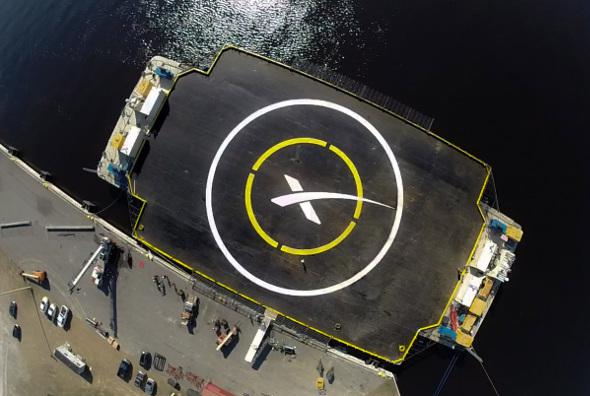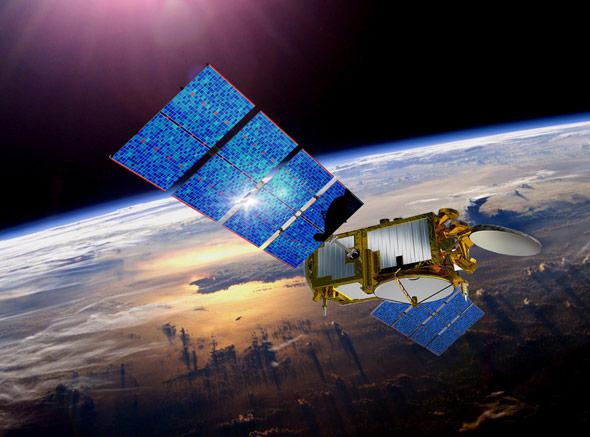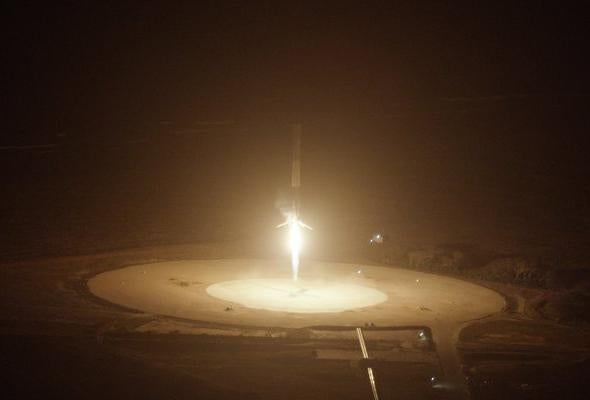SpaceX will attempt to launch a very important satellite Sunday: Jason-3, a NASA/NOAA bird that will measure the height of the ocean surface. The launch will be from the Vandenberg Space Launch Complex in California.
The launch window is 30 seconds long and begins at 18:42:18 UTC (1:42:18 Eastern U.S. time) Sunday. NASA TV will be covering it live (I prefer their UStream channel myself). I don’t know if the SpaceX live-stream channel will cover it, but you can check around the time of launch (live video of the landing may be difficult due to connectivity issues over the ocean). Update: SpaceX will have two live streams; one with hosts explaining what’s going on, and one without.
Update, Jan. 17, 2016, at 19:15: The launch was a success! The Jason-3 satellite is in a temporary orbit as I write this, awaiting a second burn to put it on the correct polar orbit trajectory. The booster landing, unfortunately, didn’t go so well. With heaving seas at 3-4 meters, the rocket landed hard and according to Elon Musk broke a landing leg. The live feed went out, so hopefully video of the event will turn up soon.
Update, Jan. 17, 2016, at 19:45: Jason-3 has reached orbit! The second stage burn was successful, and the Earth-observing satellite is now in it final orbit—thus achieving the primary mission objective. Congratulations to everyone at NASA, NOAA, and SpaceX!
The primary mission will be to loft the satellite, of course, but most people will be watching because this will be the company’s second attempt to reland the first stage booster of the Falcon 9 rocket. The last attempt was less than a month ago and was a spectacular success, with the booster coming back down vertically at a landing pad at Cape Canaveral, Florida.

Photo by SpaceX
Sunday’s attempt will be over the ocean, on a floating platform called “Just Read the Instructions” (the platforms are named after spaceships in novels written by sci-fi author Iain M. Banks). This is more difficult than bringing the booster back over land, because—and stop me if this is too complicated—land tends to stay still while the ocean surface bobs up and down, sometimes violently.
The decision to do an ocean versus land, um, landing rests on many factors, the most important of which is acceleration; a heavy payload needs more fuel to loft into orbit, and if it’s going to a higher orbit more fuel is needed still. That changes the logistics of where the booster can land; some fuel needs to remain after the boost stage to slow the first stage, bring it to the landing site, and then be used for the final descent.
In the case of Sunday’s launch, an environmental approval wasn’t received in time, so SpaceX had to move the landing out to sea. Incidentally, this launch marks the last for the v1.1 Falcon 9; the rest will be using the upgraded F9. AmericaSpace has more on that.
The booster from last month’s launch is undergoing testing right now; SpaceX CEO Elon Musk tweeted about it, indicating one of the engines underwent thrust variations during a hold-down firing test (where the booster is fueled up, strapped down, and allowed to fire its engines). Musk speculated it might have gotten some debris in it, but further testing is planned.
The point of relanding the booster is that it costs about $60 million to build the Falcon 9 first stage from scratch, but far less to load it back up with fuel and reuse it. The cost savings can then go directly into lowering the launch price. If this works, it could revolutionize rocket launches … but there are many steps to take before then, including getting a successful launch of a reused booster. That may happen this year.

Drawing by NASA
Mind you, again, the primary mission is to launch Jason-3, the latest in a series of Earth-observing satellites that will monitor how the changing climate is affecting our planet, specifically sea level rise and ocean currents. Jason-3 will use radar altimetry—bouncing radar pulses off the ocean surface and back up to space—to determine its altitude with an accuracy of a few centimeters. It will do this millions of times all over the planet, building up a detailed map of sea level over time. As polar ice melts and the oceans absorb heat from the atmosphere, the sea level is rising by over 2 millimeters per year. The ice melt introduces huge amounts of fresh water into the salty ocean, which can change ocean currents as well. All of this needs to be monitored very carefully, since the ocean currents are the major way heat is transported around the planet.
So there’s a lot riding on this launch. Let’s hope it goes off as well as the last one! If there’s a delay, the next window opens on Monday at 18:31:04 UTC.
